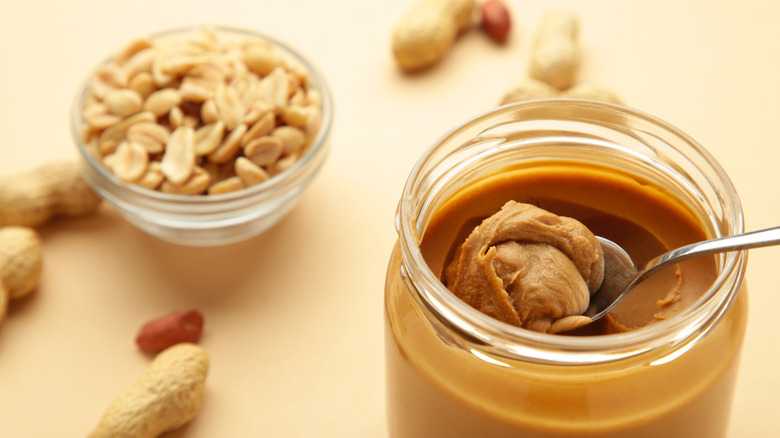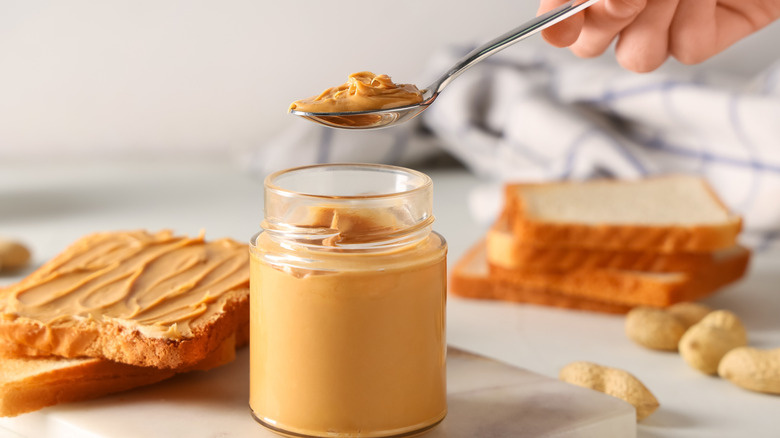How To Fix Overly Runny Peanut Butter
Too drippy to spread, too loose to dip — overly runny peanut butter can be a letdown when you're expecting that perfect, spoonable consistency. Whether it's a natural peanut butter that separated or a homemade batch that turned out more pourable than spreadable, there's a surprisingly simple way to fix it: Add water. Yes, it sounds backward, we know. Water is typically the enemy of nut butters and oils, but when added carefully, it can transform your peanut butter into something thick, creamy, and stable. Start with just a few drops at a time, stirring thoroughly between each addition. As strange as it seems, the water encourages the peanut solids and oils to emulsify — meaning they come together instead of staying separate.
You're essentially doing what commercial peanut butter manufacturers do, just on a smaller, more low-key scale. The trick is to go slow and stop once it reaches the consistency you want. Add too much water, and you'll swing too far in the other direction, but a tablespoon or two is usually all you need for a full jar.
How water thickens peanut butter
It's all about emulsion. Peanut butter is made of ground nuts, which contain solids, fats, and trace moisture. When it's too runny (you can also fix peanut butter if it's too thick), it's often because the oil has separated or the mix wasn't blended enough to hold its structure. Adding a small amount of water reintroduces the right balance and encourages the fat and solids to bind together. Water acts as a bridge between the peanut solids and the natural oils. As you stir, those components begin to emulsify, creating a thick and creamy texture that holds its shape. Think of it like shaking up a salad dressing — oil and vinegar don't mix until you shake them, and then they briefly emulsify. The same principle works here, but instead of vinegar, the water binds with the peanut proteins and helps bring everything back together.
If you're working with homemade (check out our tips for the best homemade peanut butter) or natural peanut butter, keep in mind that temperature matters too. Cold peanut butter may need a bit more elbow grease (or a quick warm-up) before the water takes effect. But once you get the hang of it, it's an easy fix that'll save your sandwiches, smoothies, and snacks from a greasy mess.

